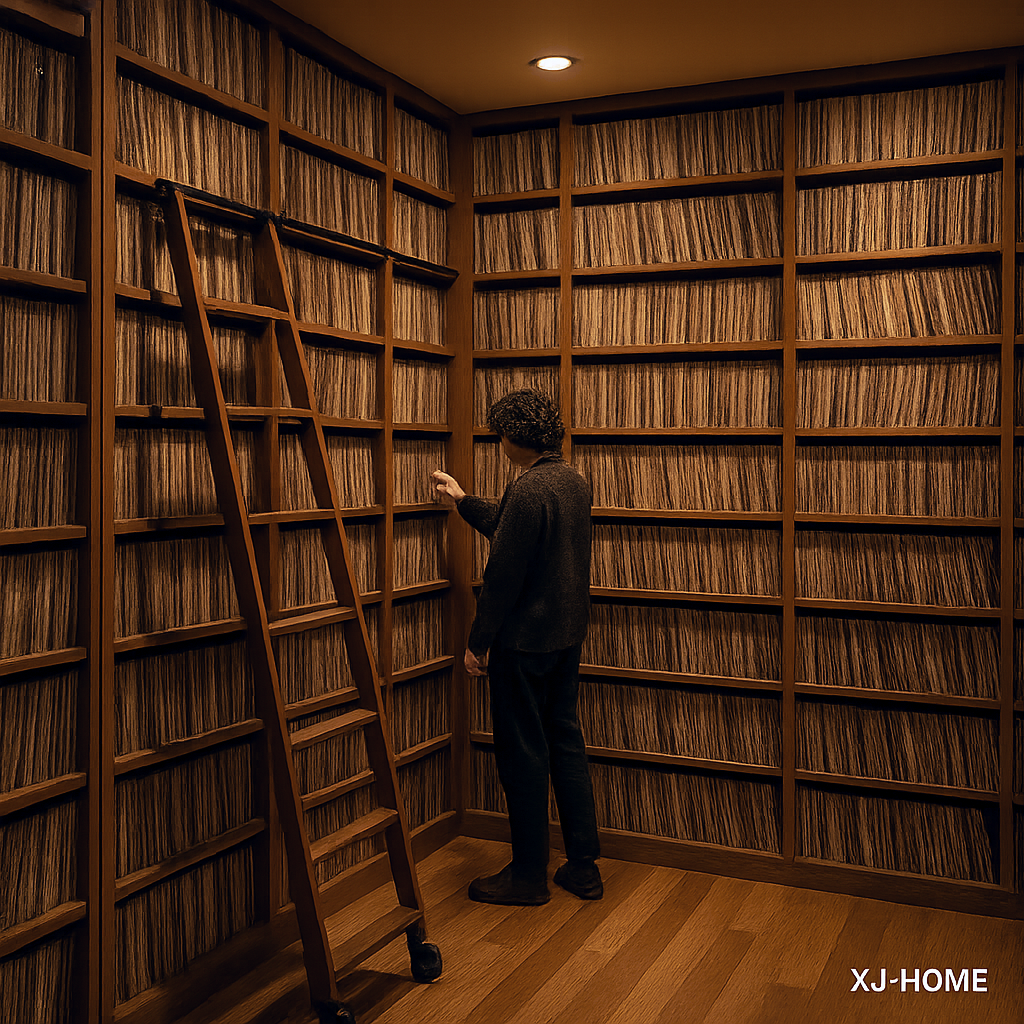You've leveled your turntable, your records are clean, and you're enjoying the analog warmth. But is there still a subtle muddiness, a lack of clarity, or perhaps even skipping when someone walks heavily across the room? The culprit might be unwanted vibrations reaching your turntable. While high-end isolation platforms and specialized feet can cost a pretty penny, the good news is that you can achieve noticeable improvements with some clever DIY isolation feet made from everyday materials.
Why Bother with Isolation? The Vibration Villain
Turntables are incredibly sensitive mechanical systems. The stylus in your cartridge is designed to pick up microscopic variations in the record groove. Unfortunately, it's equally adept at picking up external vibrations – from your speakers, footfalls, traffic outside, or even the hum of nearby appliances. These vibrations can:
-
Muddy the Sound: Bass can become boomy and indistinct, and overall clarity can suffer as the stylus struggles to distinguish between the musical information and the noise.
-
Cause Tracking Issues: Severe vibrations can make the stylus skip or mistrack, leading to distorted sound or even damage to your records and stylus.
-
Introduce Feedback: Vibrations from your speakers can travel back to the turntable, get picked up by the stylus, and be re-amplified, creating a howling or humming feedback loop, especially at higher volumes.
Effective isolation aims to decouple your turntable from these unwanted vibrations, allowing the stylus to do its job cleanly. While we at XJ-HOME appreciate the engineering that goes into high-performance audio accessories, we also love ingenious, practical solutions that make good sound accessible to everyone.
DIY Isolation Feet: Simple Solutions for a Clearer Sound
Here are a few ideas for creating your own turntable isolation feet using readily available and inexpensive materials. Remember, experimentation is part of the fun! What works best can depend on your specific turntable, the surface it's on, and the type of vibrations you're dealing with.
Important Safety Note: Always ensure your turntable is stable and secure with any DIY solution. You don't want your precious deck taking a tumble!
1. The Squash Ball (or Racquetball) Solution
-
Materials:
-
3 or 4 squash balls (the softer, "two yellow dot" type is often preferred for its damping properties) or racquetballs.
-
Optional: Small cups or furniture coasters (slightly larger than half the ball) to hold the balls in place if needed.
-
-
How it Works: The soft, pliable rubber of the balls absorbs and dissipates vibrational energy.
-
Construction:
-
Carefully lift your turntable.
-
Place the squash balls directly under the plinth (base) of your turntable, near the existing feet or at strategic points for balance (e.g., three in a triangle, or one near each corner).
-
If the balls tend to roll, you can cut them in half (use extreme caution if doing so!) and place the cut side down. Alternatively, place each ball in a small, shallow cup or coaster to keep it from rolling.
-
Gently lower your turntable onto the balls. Ensure it's stable.
-
-
Pros: Very effective at damping vibrations, especially footfalls. Inexpensive and readily available.
-
Cons: Can be a bit wobbly if not implemented carefully. The height of the turntable will be raised. Cutting balls requires care.
2. The Cork and Rubber Sandwich
-
Materials:
-
Sheets of cork (like cork tiles or thick coasters)
-
Sheets of soft rubber (e.g., from an old mousepad, neoprene, or sorbothane if you want to get a bit fancier – though sorbothane isn't strictly "everyday").
-
Strong adhesive (contact cement or heavy-duty double-sided tape).
-
-
How it Works: Combines the damping properties of both materials. Cork is good at absorbing high-frequency vibrations, while rubber handles lower frequencies.
-
Construction:
-
Cut equal-sized squares or circles from the cork and rubber (e.g., 2x2 inches or 5x5 cm). You'll want enough for 3 or 4 feet.
-
Create sandwiches: Glue a layer of rubber between two layers of cork, or alternate layers (cork-rubber-cork). Experiment with thickness.
-
Once the adhesive is dry, place these composite pads under your turntable's existing feet or directly under the plinth.
-
-
Pros: Relatively stable. Good broadband vibration damping. Customizable thickness.
-
Cons: Requires some cutting and gluing.
3. The Inner Tube Donut
-
Materials:
-
An old bicycle inner tube.
-
Scissors or a utility knife.
-
Optional: A pump to slightly inflate.
-
-
How it Works: A cushion of air provides excellent isolation.
-
Construction:
-
Cut sections from the inner tube.
-
You can either form small, partially inflated "donuts" or rings to place under the turntable's feet, or create a larger, very slightly inflated "cushion" that the entire plinth can rest on (ensure stability!).
-
If making donuts, you might need to seal the cut ends (e.g., with a patch kit, or by folding and clamping, though this is less ideal). The goal is a soft, compliant cushion.
-
-
Pros: Can be very effective, especially for low-frequency rumble.
-
Cons: Can be fiddly to get the inflation just right. Potential for air leakage over time. Stability can be a concern if over-inflated or poorly implemented.
4. Layered Felt or Dense Foam Pads
-
Materials:
-
Thick felt pads (like heavy-duty furniture pads).
-
Dense closed-cell foam (e.g., from packing materials, yoga mat scraps).
-
-
How it Works: These materials provide a degree of damping and decoupling.
-
Construction:
-
Cut multiple layers of felt or foam into equal sizes.
-
Stack them to create pads of the desired thickness. You can glue them together or just stack them.
-
Place under the turntable's existing feet.
-
-
Pros: Very simple and inexpensive. Good for reducing direct transmission of vibrations.
-
Cons: May be less effective than rubber or air-based solutions for certain types of vibrations, particularly low-frequency rumble. Can compress over time.
Testing Your DIY Solution
The best way to know if your DIY isolation feet are working is to listen.
-
Play a record with quiet passages and listen for any reduction in background noise or rumble.
-
Does the bass sound tighter and more defined?
-
Try the "tap test": gently tap the surface your turntable is on (not the turntable itself!). Does the tap come through the speakers as much as it did before?
-
If footfalls were an issue, have someone walk past. Is there less skipping or audible thud?
Experimentation is key. Sometimes a combination of materials or a slight adjustment in placement can make all the difference. For more in-depth technical discussions on vibration control, audio forums like Audiokarma.org have extensive threads where enthusiasts share their experiences and knowledge.
By taking a little time to address vibration, even with simple DIY solutions, you can significantly enhance your vinyl listening experience, allowing more of the music and less of the noise to shine through. Happy tinkering!





Leave a comment
All comments are moderated before being published.
This site is protected by hCaptcha and the hCaptcha Privacy Policy and Terms of Service apply.